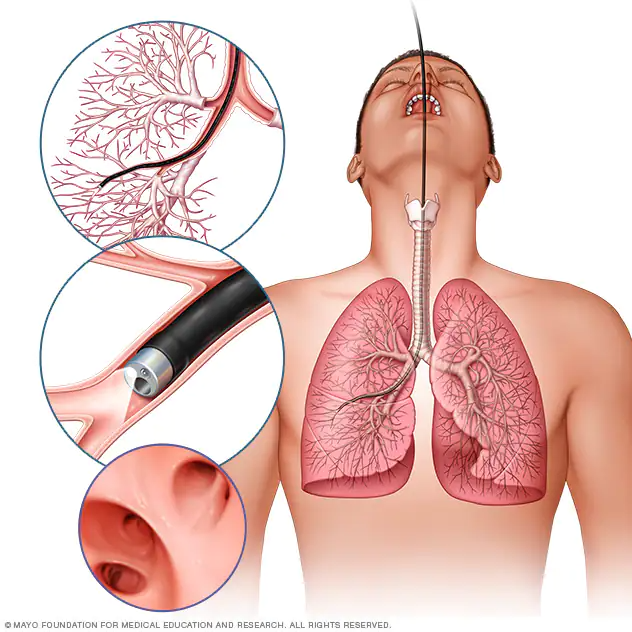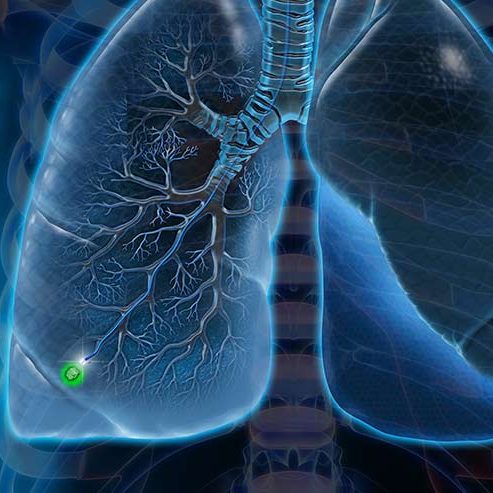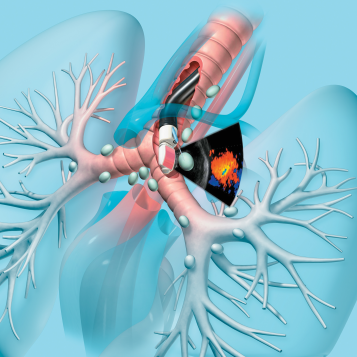Our providers have the knowledge, training, and privileges to perform many in-hospital procedures. Bronchoscopy is the #1 procedure our team performs. If you experience any of the following, a bronchoscopy may be indicated:
Source: American Thoracic Society

WHAT IS A BRONCHOSCOPY?
Bronchoscopy (say “bron-KOSS-koh-pee”) is a type of procedure. Your doctor uses a flexible tube to look at your airway. This tube is called a bronchoscope. It lets your doctor see your throat, voice box (larynx), windpipe (trachea), and bronchial tubes.
There are many reasons to have this procedure. Your doctor may look for problems with your airway. Or he or she may remove an object or growth. Your doctor could also take a sample of tissue to study. This is called a biopsy.
You will probably be awake for the procedure. But you will get medicine so you will not have pain. The doctor puts the bronchoscope into your mouth or nose and down your throat.
Most people go home the same day. You will probably be able to go back to work or your normal routine in 1 or 2 days.
Source: Healthwise
Image Credit: Mayo Foundation for Medical Education and Research (MFMEF)

WHAT IS AN ELECTROMAGNETIC NAVIGATION BRONCHOSCOPY?
lectromagnetic navigation bronchoscopy (ENB) is a minimally invasive procedure used to biopsy pulmonary nodules. Your physican collects a small sample from the nodule for testing. ENB typically lasts 30–45 minutes. You’ll be sedated during the procedure.
Electromagnetic sensors provide a clear line of sight to the nodule. A 3D map is generated based on exhalation, so your physician can track nodules that move when you breathe. Your physician can switch from an endobronchial (airways) to a percutaneous (chest cavity) approach in the same procedure, so you don’t have to delay results or schedule another visit.
Source and Image Credit: Veran Medical Technologies

WHAT IS AN EBUS BRONCHOSCOPY?
EBUS (endobronchial ultrasound) bronchoscopy is a procedure used to diagnose different types of lung disorders, including inflammation, infections, or cancer. Performed by a pulmonologist, EBUS bronchoscopy uses a flexible tube that goes through your mouth and into your windpipe and lungs. Similar to, though smaller than, the device used during a colonoscopy, the EBUS scope has a video camera with an ultrasound probe attached to create a local images of your lungs and nearby lymph nodes in order to accurately locate and evaluate areas seen on x-rays or scans that need a closer look.
Using the camera and the ultrasound, your doctor will examine and collect samples from your lung, which are usually taken with a small needle. You may experience a mild cough and a sore throat, but both will usually go away a day later.
EBUS bronchoscopy is an outpatient procedure, and you will generally be allowed to go home after a brief observation period. You will be asked to have someone drive you home from the procedure.
Source and Image Credit: American College of Chest Physicians

